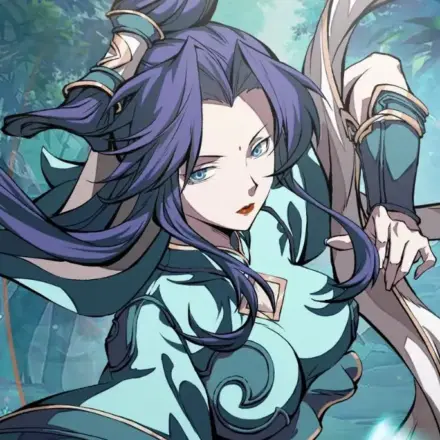 Many players following Crickex Sign Up discussions have asked why Diao Chan is considered a top-tier character worth 2000 coins in Three Kingdoms: Vision of China. Some say she’s only useful for her “extra action” ability, but that’s an oversimplification. After all, how could a single mechanic justify such a high price tag? The answer lies in the depth of her design, where timing and synergy make all the difference.
Many players following Crickex Sign Up discussions have asked why Diao Chan is considered a top-tier character worth 2000 coins in Three Kingdoms: Vision of China. Some say she’s only useful for her “extra action” ability, but that’s an oversimplification. After all, how could a single mechanic justify such a high price tag? The answer lies in the depth of her design, where timing and synergy make all the difference.
In tactical RPGs, the “extra action” system is like a diamond among mechanics—rare and powerful, especially in the game’s early stages. For Diao Chan, this feature alone gives her extraordinary strategic value. Beyond her mobility, she also supports allies by regenerating their “battle intent,” which directly impacts ultimate skill usage. Initially, she can restore intent through single-target skills, but once upgraded to tier five, she can trigger this effect through area-of-effect abilities. While her healing output isn’t the strongest, her group-healing option becomes strategically important in certain fights. Since healers with extra-action mechanics often stay relevant for a long time, it’s wise to advance Diao Chan to tier five as early as possible.
Her core ability, “Graceful Dance,” defines her playstyle. With a two-turn cooldown, it’s balanced by genre standards. The developers chose not to attach healing to it, likely for balance reasons. Fortunately, Diao Chan’s passive skill compensates for that. “Dancing Shadows,” her passive regeneration ability, restores half as much HP as her single-target heal but remains vital in early battles. Without it, her role as a secondary healer would be hard to justify. Moreover, this skill doesn’t just heal—it lowers enemy morale, boosts ally intent, and applies useful buffs and debuffs. In other words, it gives her a surprising amount of tactical flexibility.
Crickex Sign Up readers familiar with turn-based combat will recognize “Tender Mercy,” her damage-reduction skill, which helps mitigate bursts during prolonged fights. Meanwhile, “Reinforcements” serves as a basic group heal and can be alternated with “Crisis Aid,” her single-target recovery move, depending on the situation. The ultimate ability, “Beauty Beyond Compare,” delivers wide-range team healing and also regenerates extra battle intent. However, its three-turn cooldown limits frequency, and compared with other titles’ premium supports—like Liana’s “Holy Blessing” or Feng Ling Sheng’s “Celestial Waltz”—Diao Chan’s large-scale healing feels a bit restrained. The developers clearly wanted to prevent her from becoming overwhelmingly dominant.
In most early- to mid-game lineups, the best setup combines “Crisis Aid,” “Graceful Dance,” and “Dancing Shadows.” Later, players can adapt depending on combat conditions. For class advancement, prioritize the upper “Dancer → Alluring Beauty” route, which enhances skill synergy. As for companions, the ideal pairing is Yan Heng, whose talent increases allies’ damage by 10% whenever battle intent is restored—perfectly matching Diao Chan’s support role.
For the secondary companion slot, Mi Rui is the best choice for additional recovery effects, though Mi Fang works well as a temporary option if red-tier partners are lacking. This combination ensures continuous healing, frequent extra actions, and smooth ultimate rotations across long battles.
With such mechanics, Diao Chan isn’t just another support character—she’s the heartbeat of a well-balanced team. Her abilities make her one of the most reliable tactical pieces in the entire roster. Players who invest early will find her power curve remarkably stable throughout the campaign. After all, as seasoned Crickex Sign Up strategists would say, in tactical games like these, a hero who can act twice often wins twice.
